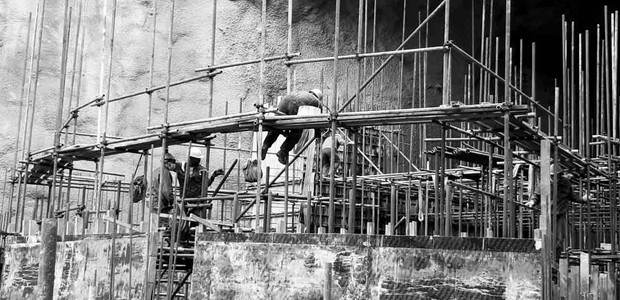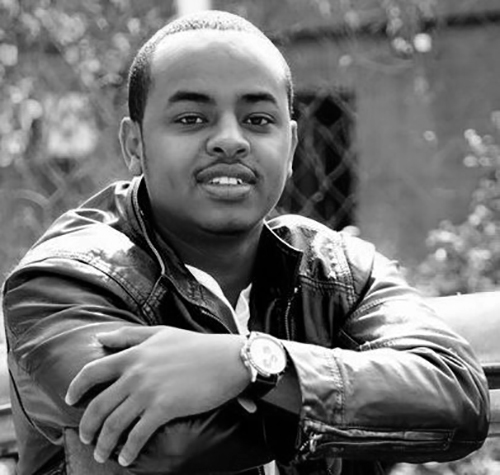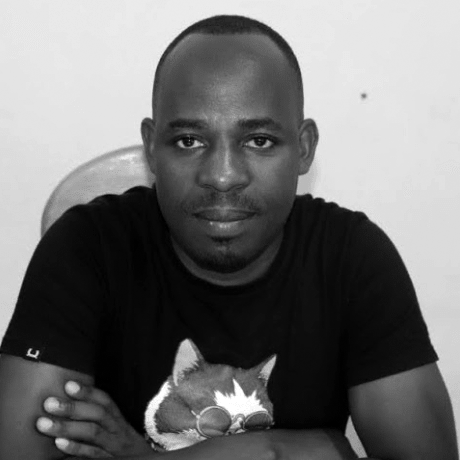Overcoming conflicts to cooperate on power generation

The Regional Rusumo Falls Hydroelectric Project (RRFHP) is a hydropower project under joint development by the governments of the Republic of Burundi, the Republic of Rwanda and the United Republic of Tanzania through the commonly owned Rusumo Power Company (RPCL).
The Nile Equatorial Lakes Subsidiary Action Program Coordination Unit (NELSAP-CU), the investment arm of the Nile Basin Initiative (NBI), coordinated the preparation and signing of several vital agreements by the three beneficiary countries and later the implementation of the project.
The three governments entered the joint development through a ‘Tripartite Agreement’ signed on February 16, 2012. The development objective of the RRFHP is to increase the electricity supply to the national grids of Rwanda, Tanzania and Burundi.
The project is located at Rusumo Falls, at the shared border of Rwanda and Tanzania on River Kagera. The power production facilities are located entirely on the south side of the bank of the Kagera River in Tanzania, while the substation is located on the northern side of the river bank in Rwanda.
The project has four components: a hydropower generation plant, transmission lines and substations, a ‘Local Area Development Program’ and a ‘Livelihood Restoration Program’ at a total cost of USD 468.60 million.
The World Bank financing of a total of USD 339.90 million – USD 113.30 million to each of the governments of Burundi, Rwanda and Tanzania – comes from the International Development Association (IDA), the World Bank’s fund for the poorest. The African Development Bank (AfDB) provides USD 128.6 million for the transmission lines.
The project has made
very considerable
progress.
The project will boost reliable power supply to the electricity grids of Burundi, Rwanda and Tanzania, reduce electricity costs, promote renewable power, spur job-led economic development and pave the way for more dynamic regional cooperation, peace and stability among the countries of the Nile Equatorial Lakes (NEL) sub-region in East Africa.
The project’s completion deadline is set for 2022 and is expected to produce 80 megawatts, with each country getting 26.6 megawatts. The additional power will benefit over one million people in the three countries: 520,000 in Burundi, 467,000 in Rwanda and 159,000 in Tanzania.
Despite political disagreements between the neighbouring countries Rwanda and Burundi, the project transmission lines will extend from the power generation plant at Rusumo to Gitega in Burundi, Kigali in Rwanda and Nyakanazi in Tanzania.
Dr. Robert Zwahlen, an independent Environmental Expert, who was on an on-site visit in October 2021, says the project has progressed well since his last visit in November 2019. “The project has made very considerable progress. The situation now looked very different from what had been the case on the occasion of the last site visit.”
Boosting the local economy
Communities in Rwanda and Burundi are already excited by the prospect of reliable energy. They also are pleased by the positive distraction from lasting political differences.
Modest Nzirabayinya, the Vice Mayor in charge of economic affairs in Kirehe District, says the project has a twofold benefit to residents living near the Rwanda-Tanzania border post of Rusumo. “This project will give jobs to our citizens who used to depend on cross-border trade. But with employment, they will be able to invest in other kinds of businesses locally.”
He said that the project would change the face of business, increasing electricity infrastructure in the area that largely depends on Tanzania for cross-border trade and relies on electricity to do business.
“For example, we construct the Rusumo One-Stop Border Post market, which needs a consistent power supply. Some sectors like Mpanga, Nashyo, and Mahama that have not seen electricity will be connected to the broader power extension plan and benefits.” Nashyo is a key agricultural trade point in Kirehe, while Mahama is inhabited by over 70,000 Burundi and Congolese refugees.
We could not
have any industrial
activities happen here.
The ongoing electricity projects in Kirehe District have attracted Jean Claude Havugimana to move from the Gicumbi District to start a new life in Rusumo town. As a casual labourer with two children, he anticipates that the hydropower plant will enable him to access electricity in his village, meaning he can start a welding workshop and buy a computer for his children to use for their education.
Rusumo village leader Jesse Kagabo also believes that when the power project is completed, his community will see development and business activities sprouting in the area, largely dependent on agricultural activities. “As a result of lack of electricity in this area, we could not have any industrial activities happen here, for example, grain milling or welding activities. But now this is possible when the power plant is completed,” Kagabo said.
By January 2022, officials from Rwanda, Burundi and Tanzania, who visited the construction site of the Regional Rusumo Falls Hydroelectric Project, commended the project’s progress. Rwandan Governor of the Eastern Province, Emmanuel K. Gasana, said that, on completion, the project would impact the lives of citizens in all three countries. “We are grateful for our Heads of State who thought of this electricity project to improve and create jobs for citizens in the three countries,” he said.
Reducing energy disparities
Burundi is also anticipating the effect of the Rusumo project that will make more than 26,000 new grid connections and an upgrade to 60 currently overloaded transformer stations to reduce energy losses and undistributed energy.
Burundi says the number of households with electricity connections will increase, thanks to the Rusumo Falls project. The Burundi Association of Consumers is among those welcoming the initiative.
Noël Nkurunziza, who represents the Burundi Association of Consumers, said that the project’s contributions would reduce energy disparities in the country. Some 36 localities spread all over the 11 provinces of the country are all expected to benefit from the RRFHP.
“In addition, the urbanisation on the horizon and the associated economic activities to generate incomes for the population are unequal considering the current electricity demand. This means that the government must take the energy sector as its top priority because socio-economic development depends on it,” Nkurunziza said.
Arthur Bigirumwami, a resident of Karusi Province, said that farmers have the opportunity to improve their agriculture activities using irrigation as well as supplying anticipated new markets when commercial businesses emerge using the improved access to electricity.
We expect to
increase agricultural
production.
“We expect to increase agricultural production because we can grow anything even in the dry season. We will use an irrigation system. In the past, we only grew during the rainy season. When there was little or no rain, we did not get enough output, but now we will always produce because of enough water for irrigation,” he said.
Experts say that the RRFHP is one of a kind, pointing out that countries without conflict are better positioned to implement it. Patrick Nimpagaritse, a political scientist, says the project underscores how conflicts reduce the economic growth of the affected countries. “Tanzania is not involved in the conflicts, which is a good thing for the progress of the Rusumo Falls project,” Nimpagaritse says.
Thomas Opande, the Lead Africa Energy Access Initiative at World Wildlife Fund (WWF), said conflict and division meant that the countries often focused on their own projects rather than effective cross-border ones. “The problem is that each country, due to the selfish interests of a few, wants to build its own power projects, which often fail. Working together to build one energy project has more benefits to tap into the regional market in these countries,” Opande said.
Answering environmental and social concerns
The RRFHP will boost supplies of electricity in rural areas. However, the project could also unleash serious environmental problems without careful management.
According to Céléstin Havyarimana, an ‘Integrated Environmental Science and Management’ specialist, the project activities’ consequences may have permanent impacts, such as the loss of vegetation, including trees and shrubs where transmission lines are built. This could lead to the destruction of animals’ habitats and the permanent loss of portions of wetlands.
As the Environmental and Social Safeguards (ESHS) of the RRFHP are evaluated as high risks because of possible significant adverse impacts, contractors developed a detailed Environmental, Social, Health and Safety Management Plan (ESHS-MP) to be implemented during the construction phase.
I think when it is
completed, it will
solve many
challenges.
Governmental institutions and local administration are involved in the implementation of the ESHS-MP. Ministries in charge of environment, forestry and wildlife and their agencies (REMA Rwanda, the Ministry for Environment (MEEATU) in Burundi and the National Environment Management Council in Tanzania) as well as their decentralised units, are tasked with ensuring regular control of activities and compliance with the standards.
Besides environmental concerns, assessing and mitigating the impact on affected people, varying from loss of residential structures, business structures, loss of employment, loss of agricultural land and loss of marshland use, is an essential pillar of the project through the ‘Livelihood Restoration Program’. Specifically, the project provided training and start-up inputs to affected people in Rwanda and Tanzania in different intervention areas, including business and entrepreneurship skills, sustainable agriculture production and livestock development.
Alloyce Oduor, the NELSAP Project Manager for the RRFHP, said the project would directly benefit the people around the planned hydropower generation plant. As part of bringing immediate benefits to the community in the project site neighbourhoods (in Ngoma and Kirehe districts), the RRFHP has allocated USD 5 million to the people through the two district councils to implement different community development projects like irrigation, livestock, construction of new health centres and road rehabilitation through the ‘Local Area Development Program’.
Karimunda Naser heads one of the 67 households affected by the Rusumo project in Rwanda and is a Livelihood Restoration Program beneficiary. “They gave us cows and taught us modern and profitable farming methods. We get manure and milk for ourselves and for sale, improving our livelihood. Our lives have been changed for the better,” says the farmer, adding: “We are pleased with the Rusumo project, and it created jobs for many people. I think when it is completed, it will solve many challenges – people are looking forward.”



